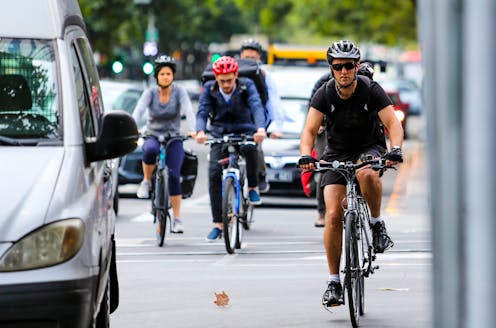Why do so few people cycle for transport in Australia? 6 ideas on how to reap all the benefits of bikes
- Written by Melanie Davern, Associate Professor, Director Australian Urban Observatory, Centre for Urban Research, RMIT University

Less than 1% of the 12 million Australians[1] who travelled to work on Census Day in 2021 rode a bicycle to get there.
Bicycles are readily available and affordable. Cycling also supports healthy, liveable and sustainable cities[2].
Yet most of us shun[3] this form of transport in Australia. The number of people cycling to work fell by 26.4%[4] between 2016 and 2021.
So, on World Bicycle Day[5], we ask why is this form of transport so undervalued and neglected?
We offer the following ideas about what needs to happen so more of us use bicycles for everyday transport.














